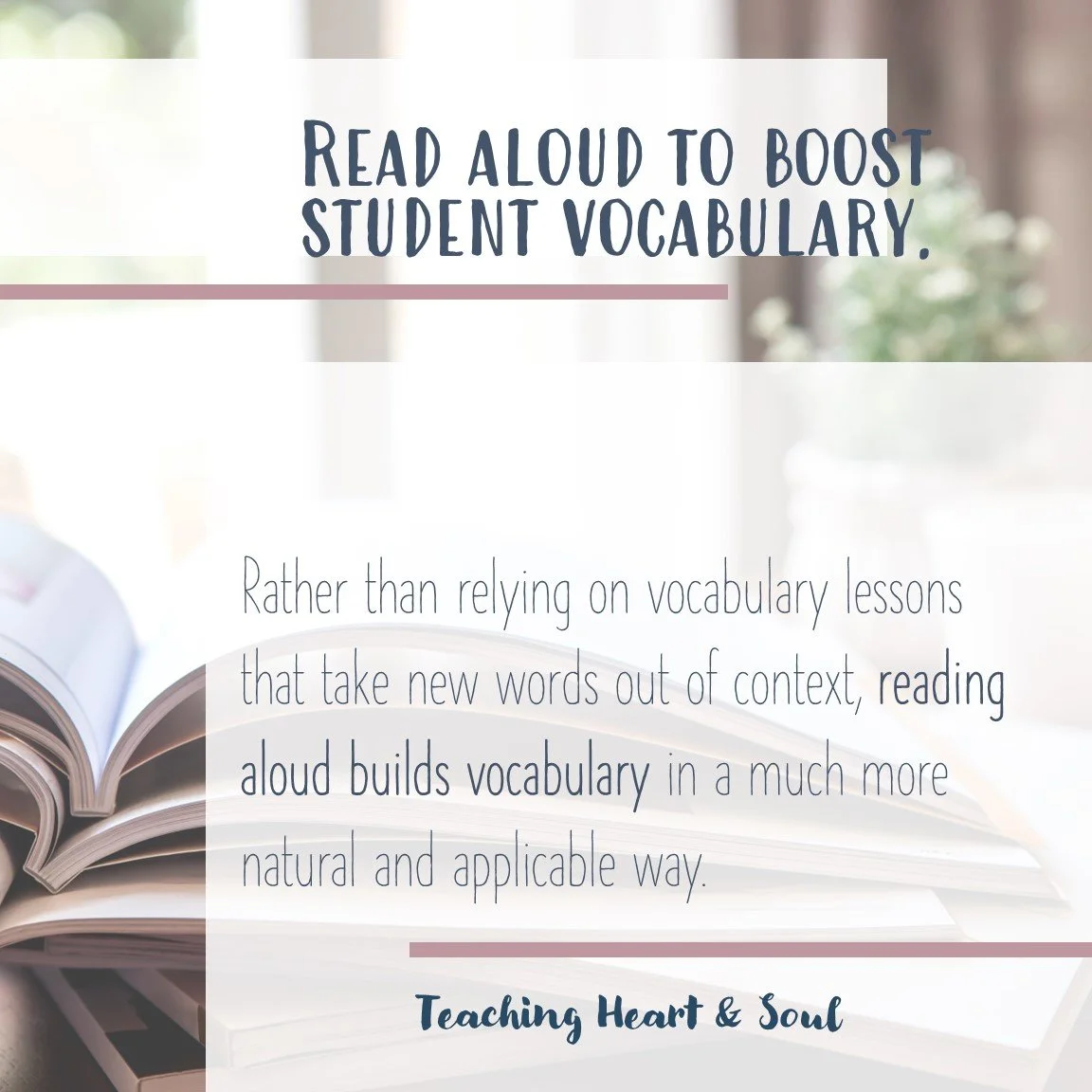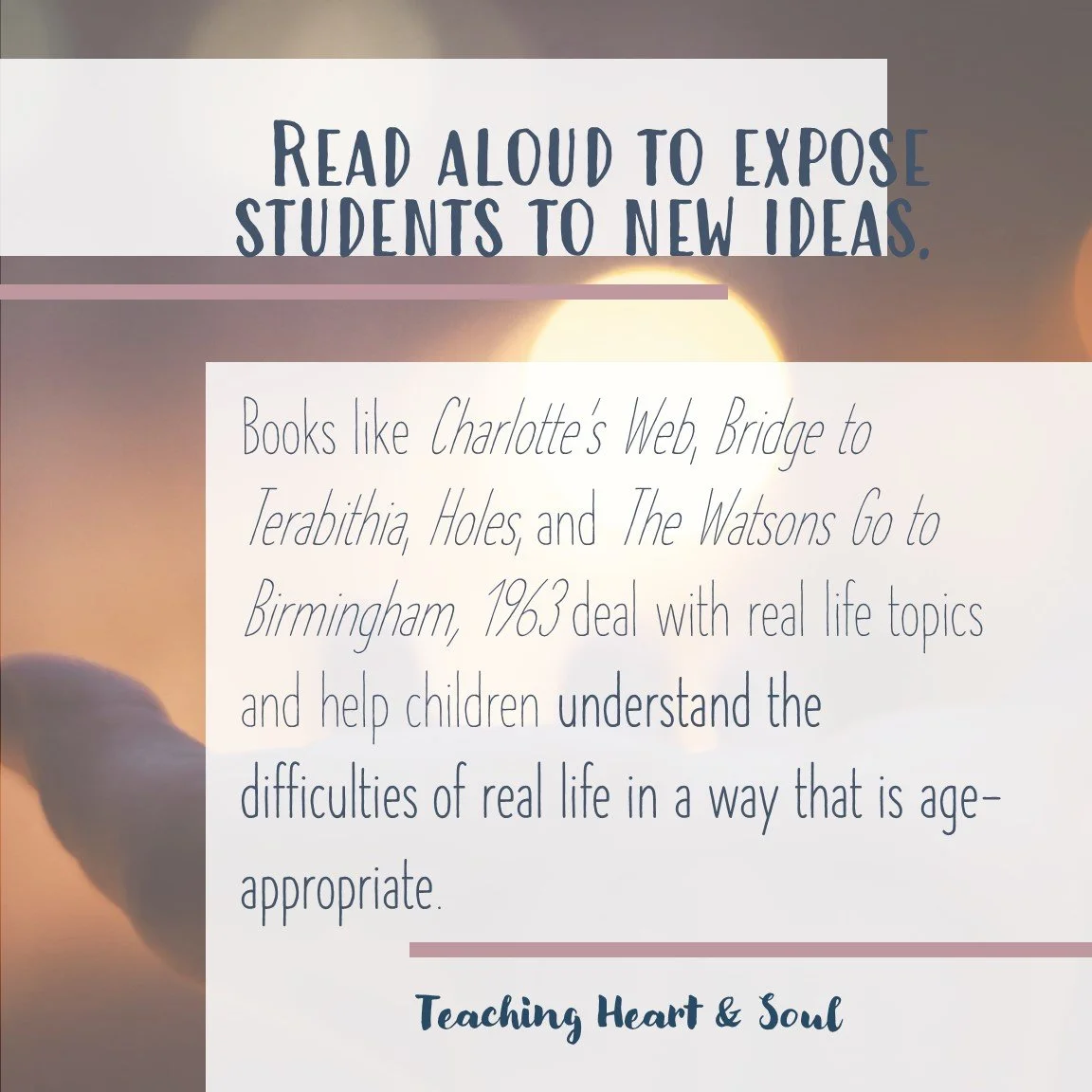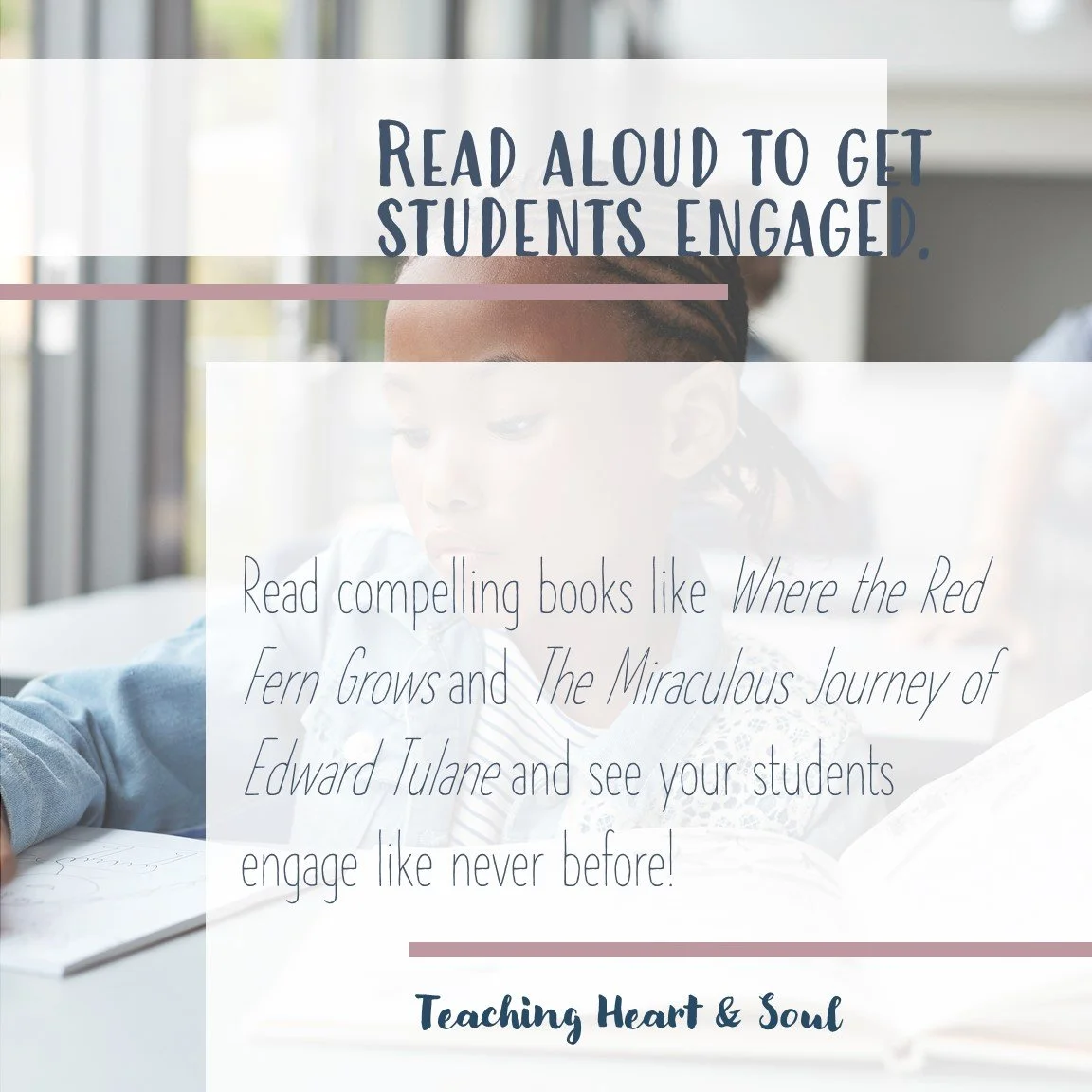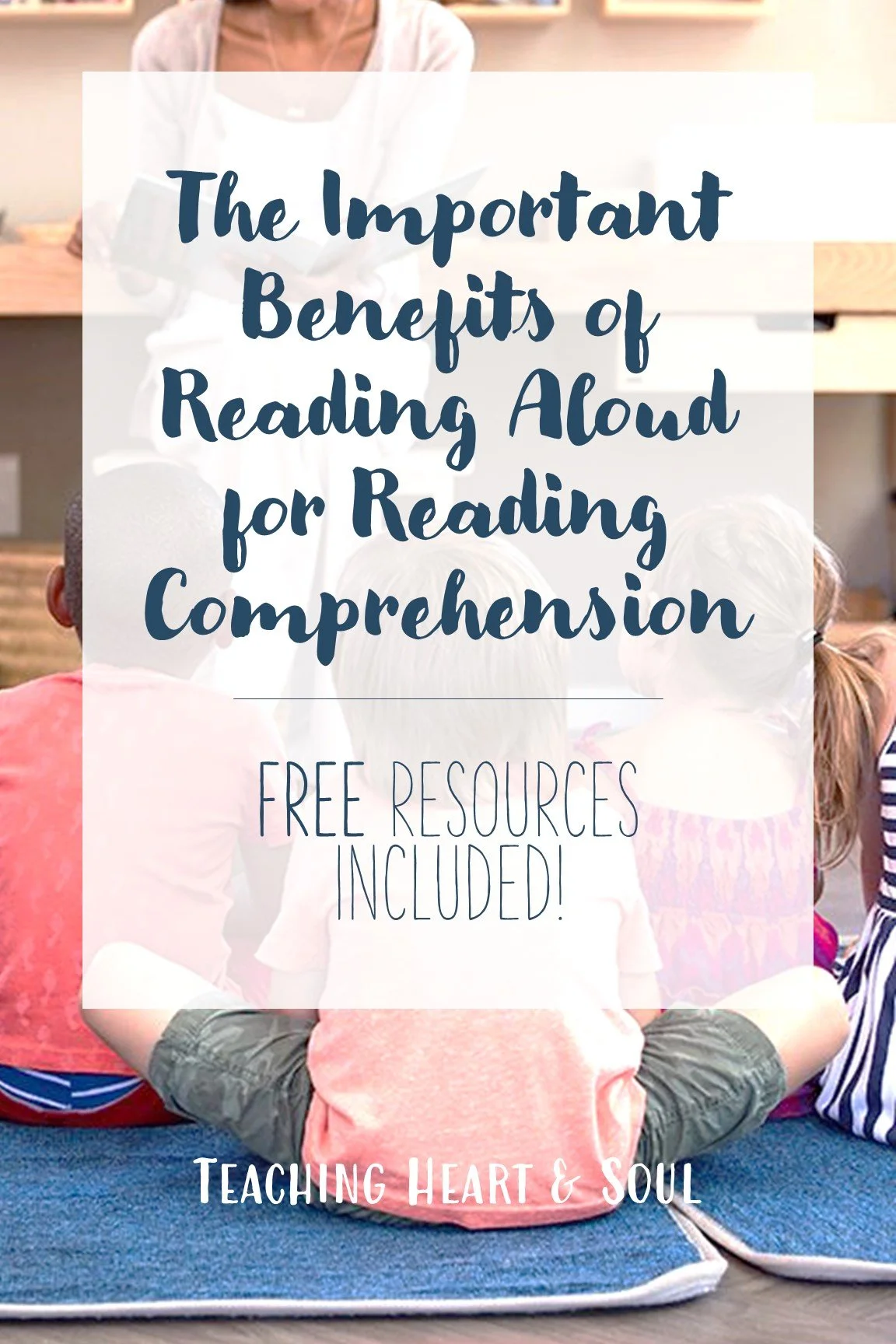Important Benefits of Reading Aloud for Reading Comprehension
Reading aloud to students is a common practice in some classrooms, but does it contribute to reading success or is it an easy time filler?
In my first teaching position, we had novels that we were expected to read aloud to our students throughout the year. We were told that this was not the time for popcorn reading or chorus reading, that we as teachers should be reading aloud these books in their entirety.
Why is this? Why is reading aloud to students important?
While reading independently is important too, there are so many benefits of reading aloud to our students. This seemingly simple activity cannot be ignored.
Check out my FREE 50-Page Reading Comprehension and Vocabulary resource HERE and other Reading Comprehension resources HERE.
Reading Aloud & Fluent Reading
One of the benefits of reading aloud is that listening to fluent reading produces fluent readers.
By modeling how fluent readers sound - with correct pronunciation, intonation, pacing, and expression - your students will be able to measure their own reading fluency against your confident and expert reading and continue becoming more fluent themselves.
When you model fluent reading (even if you're only reading a picture book), you engage students with the compelling characters of the story. They don't even realize how much they're learning about fluent reading.
Reading Aloud & Vocabulary and Language Development
Reading aloud helps with everyday speech, vocabulary, and language patterns. It exposes students to new words.
Rather than relying on vocabulary lessons that take new words out of context, reading aloud builds vocabulary in a much more natural and applicable way.
Reading a variety of texts to your students introduces them to rich language, academic vocabulary, and new words.
While you don't need to include a vocabulary lesson with every read aloud that has unfamiliar words, it can be helpful to take just a few seconds to explain the new vocabulary and rely on the context of the story to help students understand these new words.
Hearing words (especially unfamiliar words) in context, increases comprehension when students come across the same words again when they read independently. An unfamiliar text is harder to comprehend when reading independently, but it because much easier when the teacher models and supports.
In addition to an increased vocabulary, read alouds can contribute to language development, as students learn to recognize correct grammar and use it in every day speech after hearing it modeled during story time.
Reading Aloud & New Ideas
Read alouds expose students to new ideas and complex or difficult concepts.
Sometimes this means learning about history or science. Students can read a book like King George: What's His Problem? to learn about the Revolutionary War.
They can also learn about universal concepts like friendship, loss, and justice in books like Charlotte's Web, Bridge to Terabithia, and Holes.
There are so many complex ideas that are made accessible through stories.
For example, learning about racism and the Baptist Street Church bombing of 1963 is easier to digest for students through the book The Watsons Go to Birmingham, 1963.
These books deal with real life topics. They help children understand the difficulties of real life in a way that is age-appropriate.
Once students have been exposed to these complex ideas, they can use this information as relevant prior knowledge when these topics come up in the future, making it easier for them to understand related texts and take tests on these subjects.
Reading Aloud & Student Engagement
A good book gets students excited!
Hearing stories in well-written children's books exposes children to new concepts, new knowledge, and new language, but it also is exciting for students.
Have you ever read Where the Red Fern Grows or Bridge to Terabithia? Perhaps you're familiar with The Miraculous Journey of Edward Tulane? These books make you cry, not just because they're sad, but because they are compelling to teachers and students alike. You can tell a student has been listening to story time when they have tears trickling down their face at the end of a story.
Engaging books peek the listener's interest. This is such a crucial aspect of learning, too. As much as possible, make learning fun and exciting. A read aloud is a great way to do this.
(PRO TIP: End your read aloud on a cliffhanger to get students even more excited!)
When children in the classroom practice active listening skills during story time, they become proficient readers.
A wonderful book exposes children to engaging illustrations and meaningful plots. This keeps students' attention. But additionally, this modeling encourages children to read more themselves, practicing their reading skills. Students can take what they learn during a read aloud and apply it when they read silently - making independent reading time more productive.
So, invite children to read with you and watch them tune into a read aloud more than they might for any other classroom activity.
Check out this FREE Reading Comprehension resource. It has 50 pages to support your classroom! You can also check out a bunch of other reading comprehension resources HERE.
Conclusion
Reading aloud and incorporating read alouds in the classroom have numerous benefits for students, contributing to their overall literacy development and reading success. When teachers read aloud to students, it not only improves their reading comprehension but also exposes them to rich vocabulary and language patterns.
Reading aloud invites children to discover the joy of reading and fosters a love for books, turning them into good readers. It bridges the gap between everyday speech and more complex language patterns found in books.
Reading aloud creates such connections between students and the story, making the plot more meaningful and relatable. As students progress, they become better readers, and story time becomes a cherished experience, not only in the classroom but also at home with parents who recognize its significance. Even through YouTube videos, the benefits of reading aloud transcend the classroom, reaching children everywhere.
The impact of reading aloud goes beyond the classroom, with many parents recognizing its importance in supporting their children's literacy journey. In the classroom, the literacy expert ensures that reading aloud is an effective practice that supports students' comprehension and problem-solving skills.
Ultimately, reading aloud to students, whether during guided reading or other activities, empowers children to understand text structures and deepen their comprehension skills, fostering a love for reading and a lifelong appreciation for stories and writing. In this invisible act of reading aloud, teachers nurture a passion for reading and open the doors to a wonderful world of literature for their students.
Further Reading
Find out more about Reading Comprehension HERE.
Learn about vocabulary and reading HERE.





